-
1 of 253523 objects
[Commentary on Alexander of Villedieu's Doctrinale] 1481-83
20.7 x 0.6 x 14.9 cm (book measurement (inventory)) | RCIN 1060137
![[Commentary on Alexander of Villedieu's Doctrinale] [Commentary on Alexander of Villedieu's Doctrinale]](https://col.rct.uk/sites/default/files/styles/rctr-scale-1300-500/public/collection-online/2/f/1169237-1729678171.jpg?itok=LLepG6e1)
Probably Alexander Hegius (c.1433-1498)
[Commentary on Alexander of Villedieu's Doctrinale] 1481-83
![[Commentary on Alexander of Villedieu's Doctrinale] [Commentary on Alexander of Villedieu's Doctrinale]](https://col.rct.uk/sites/default/files/styles/rctr-scale-1300-500/public/collection-online/9/1/1169236-1729678173.jpg?itok=aFDKaJ6b)
Probably Alexander Hegius (c.1433-1498)
[Commentary on Alexander of Villedieu's Doctrinale] 1481-83
![[Commentary on Alexander of Villedieu's Doctrinale] [Commentary on Alexander of Villedieu's Doctrinale]](https://col.rct.uk/sites/default/files/styles/rctr-scale-1300-500/public/collection-online/4/a/1169239-1729678180.jpg?itok=Ae7Tm8BC)
Probably Alexander Hegius (c.1433-1498)
[Commentary on Alexander of Villedieu's Doctrinale] 1481-83
![[Commentary on Alexander of Villedieu's Doctrinale] [Commentary on Alexander of Villedieu's Doctrinale]](https://col.rct.uk/sites/default/files/styles/rctr-scale-1300-500/public/collection-online/9/8/1169240-1729678235.jpg?itok=zfZcjkbf)
Probably Alexander Hegius (c.1433-1498)
[Commentary on Alexander of Villedieu's Doctrinale] 1481-83
![[Commentary on Alexander of Villedieu's Doctrinale] [Commentary on Alexander of Villedieu's Doctrinale]](https://col.rct.uk/sites/default/files/styles/rctr-scale-1300-500/public/collection-online/f/c/1169241-1729678231.jpg?itok=Dqa43X4h)
Probably Alexander Hegius (c.1433-1498)
[Commentary on Alexander of Villedieu's Doctrinale] 1481-83
![[Commentary on Alexander of Villedieu's Doctrinale] [Commentary on Alexander of Villedieu's Doctrinale]](https://col.rct.uk/sites/default/files/styles/rctr-scale-1300-500/public/collection-online/3/a/1169242-1729678222.jpg?itok=r6ehw7cr)
Probably Alexander Hegius (c.1433-1498)
[Commentary on Alexander of Villedieu's Doctrinale] 1481-83
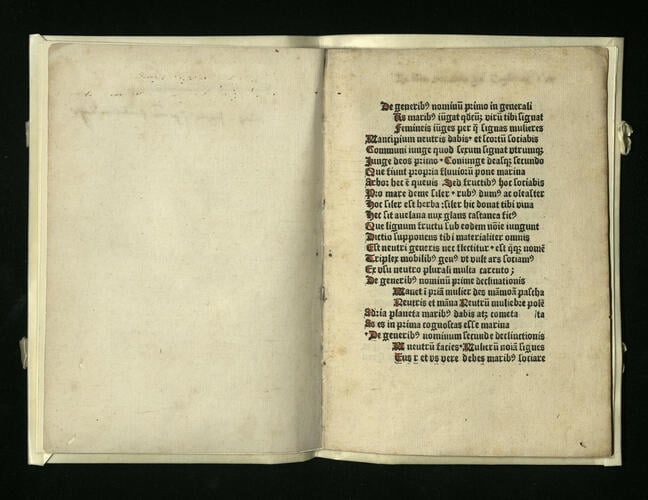
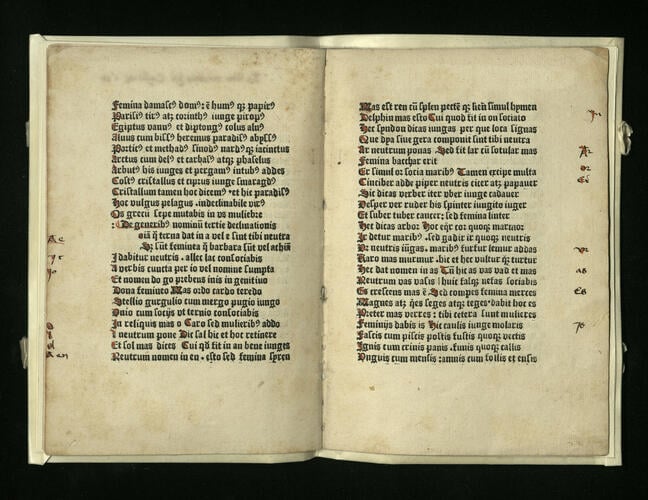
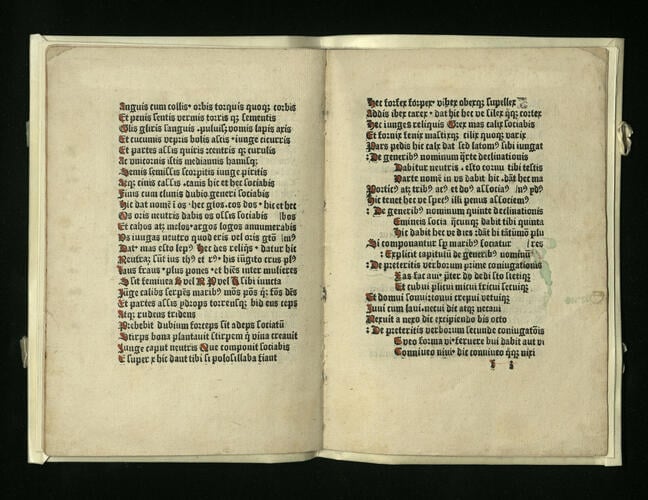
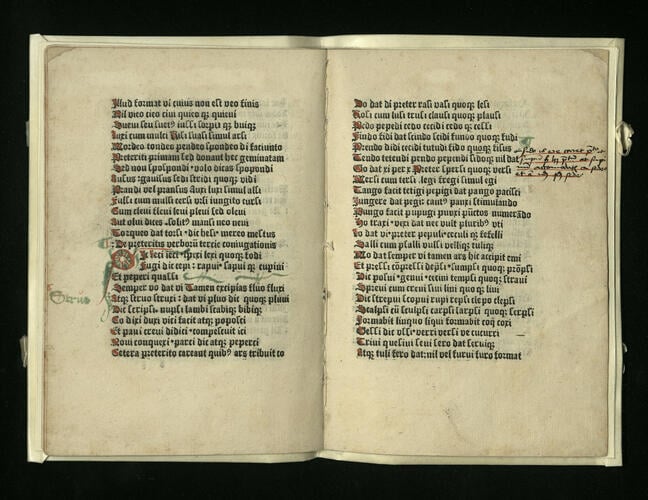
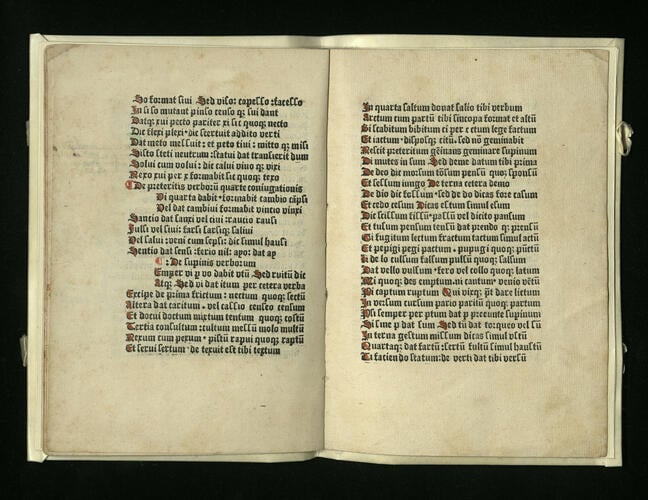
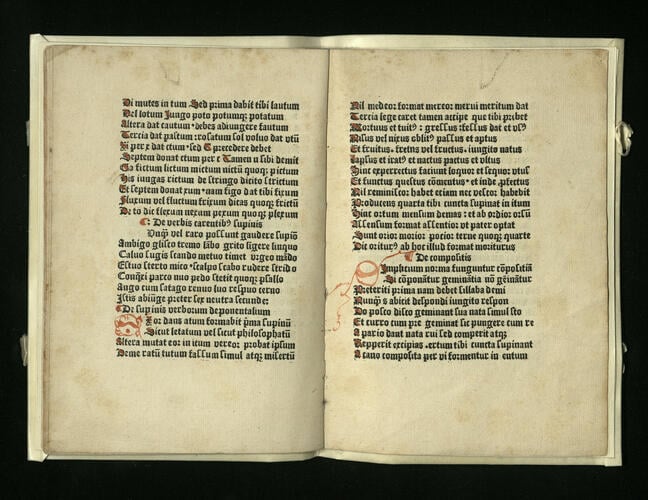
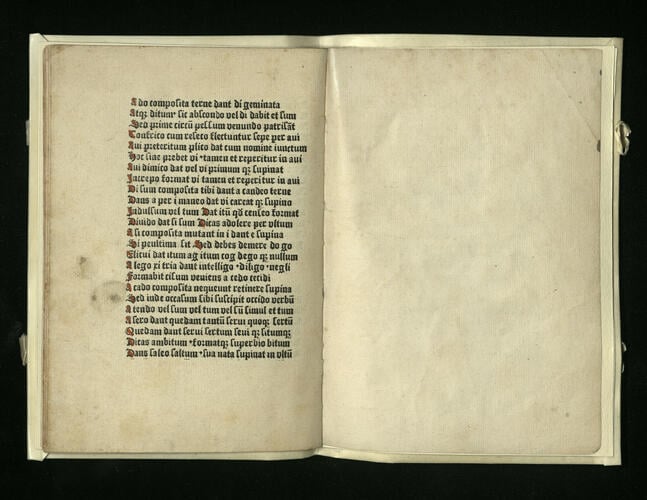
-
This volume is the only surviving copy of a 1480s humanist commentary on a medieval verse grammar. The author, Alexander Hegius, was a fifteenth-century schoolmaster based in the Netherlands, who taught in Deventer when Erasmus was a pupil there. Most of the information about Hegius' life and career comes in epistolary form, and much of it contains praise from his students. It was in fact one of them, Jacobus Faber, who edited his works for publication, some appearing posthumously.
Hegius' commentary concerns the Doctrinale puerorum, a didactic poem authored by Alexander of Villedieu in 1199. Consisting of 2645 hexameters, the Doctrinale instructs beginner-level learners on the morphology and syntax of Latin in a succinct and organised form, preparing students to tackle more complex treatises by the late antique grammarians Priscian and Donatus. The poem was very popular across western Europe and became a key school text, eventually rivalling the authority of Priscian's Grammar in the university curriculum. However, the Doctrinale was not meant to be an autodidactic manual: its enduring importance for early Latin learning should be understood in its role as a study aid. In his prologue, Alexander of Villedieu encourages teachers to explain the poem in the pupils' mother tongue, so it is not surprising that numerous commentaries emerged to accompany the poem.
While medieval commentaries on the Doctrinale often reflected on the nature of language through a philosophical (sometimes Aristotelian) lens, in the fifteenth century humanist scholars such as Hegius rejected this approach, criticising the Doctrinale's rigid and prescriptive understanding of Latin. This new perspective stemmed from the humanists' mission to revive the study of Antiquity, and therefore tools such as the Doctrinale were cast aside for being unhelpful in reviving the spirit of the classical model. The popularity of the Doctrinale may have declined as humanist thought began to rise among the intellectual circles of Europe, yet the first decades of print saw the production of 115 editions of this text, whether partial, full, or glossed.
The copy in the Royal Library is incomplete, containing only a section of the first part of the Doctrinale which focuses on declensions and conjugations. It was used and annotated by fifteenth-century readers who added signposts, marginal annotations and maxims.
Bibliographic description
Chancery paper 4to. [8] leaves. Imperfect: begins 'De generib[us] nominu[m] primo' and ends with 'sua nata supinat in vltu[m]'. Some hand-painted initials and paragraph signs in red or green; red vertical strokes decorate capital letters at the beginning of most lines.
Binding description
Twentieth-century flexible vellum binding made by Roderick Lane (14 September 1989). Sewn on two vellum tapes left long to form part of fastening method, previous sewing station still visible in the centre.
Provenance
An early modern note at f.1r states: "Ex libris societatis Iesu Confluentie", i.e. the Society of Jesus in Koblenz, active in the German city between 1580 and 1773.
-
Creator(s)
-
Measurements
20.7 x 0.6 x 14.9 cm (book measurement (inventory))
Markings
annotation: Signposts added in a secretary hand. [ff.[1] verso-[2] verso]
annotation: Brief marginal note, underlined in red, on the verb 'sido'. The hand of this annotator, who writes in a late medieval secretary hand, does not match that of the maxims on the front flyleaf. [f.[4] recto]
Other number(s)
ISTC ia00440600Alternative title(s)
Doctrinale ; [pars 1] / Alexander de Villa Dei ; commentary by Alexander Hegius.
Place of Production
Antwerp [Antwerp province]